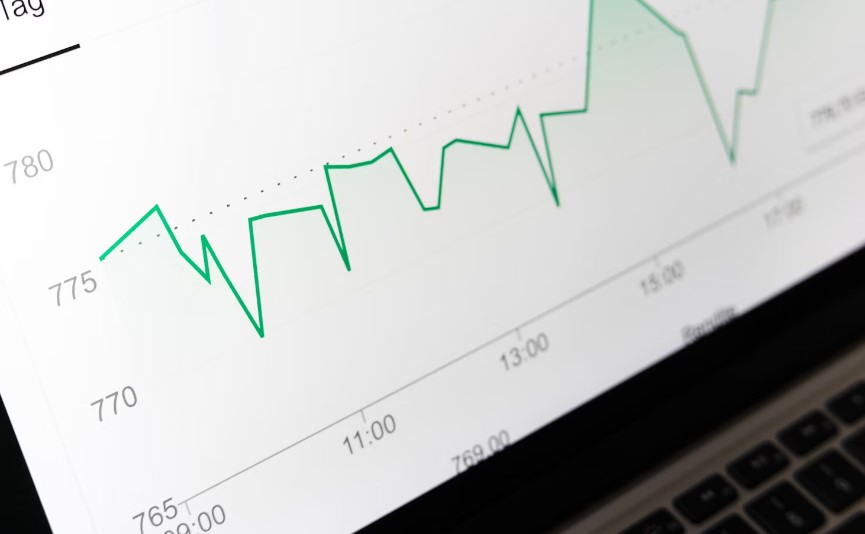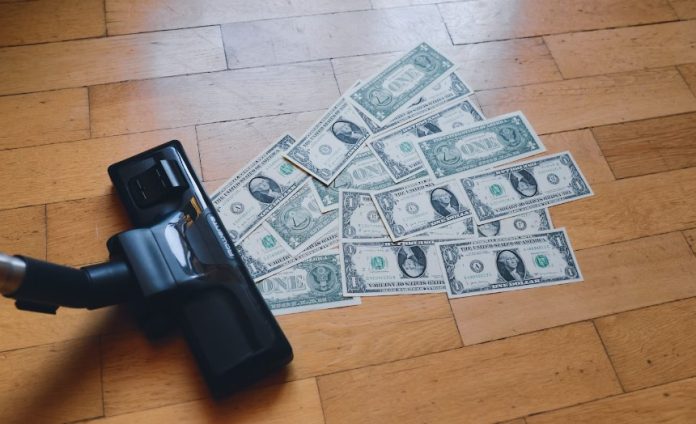U.S. prices remained steady in February, with the cost of services excluding housing and energy showing a notable slowdown, maintaining the possibility of a June interest rate reduction by the Federal Reserve.
The latest report from the Commerce Department, released on Friday, also highlighted a robust increase in consumer spending last month, marking the strongest growth in over a year and emphasizing the economy’s resilience.
Despite facing higher borrowing expenses, the United States continues to surpass its international counterparts, buoyed by its enduring labor market vigor.
“Core services inflation is experiencing a deceleration and is expected to persist throughout the year,” noted Jeffrey Roach, chief economist at LPL Financial in Charlotte, North Carolina. “By the time of the Fed’s June meeting, the data should provide sufficient evidence for them to initiate the process of rate normalization.”

According to the Commerce Department’s Bureau of Economic Analysis, the personal consumption expenditures (PCE) price index increased by 0.3% last month.
January’s data was revised upwards, indicating a 0.4% rise in the PCE price index compared to the previously reported 0.3%. Economists surveyed by Reuters had projected a 0.4% increase in the PCE price index for the month.
Goods prices rose 0.5% last month, boosted by a 3.4% jump in the cost of gasoline and other energy products.
There were also robust increases in the prices of recreational goods, vehicles, clothing, and footwear. However, prices for furnishings and household equipment, along with other durable manufactured goods, remained subdued.
Over the 12 months through February, PCE inflation advanced 2.5%, following a 2.4% increase in January. Despite a moderation in price pressures, the pace has decelerated from the first half of last year, with inflation persisting above the U.S. central bank’s 2% target.
Fed Chair Jerome Powell remarked that February’s inflation data aligned more closely with their desired trajectory.
In the preceding week, Fed officials opted to maintain the central bank’s policy rate within the existing range of 5.25%-5.50%, having raised it by 525 basis points since March 2022.
Policymakers are anticipating three rate cuts this year, with financial markets predicting the initial reduction to occur in June.
While most U.S. financial markets observed closure for the Good Friday holiday, the foreign exchange market remained active, resulting in a decline in the dollar against a basket of currencies following the release of the data.
Some Stickiness Stays
The PCE price index increased by 0.3% last month, excluding the volatile food and energy components. This followed an upwardly revised 0.5% gain in January.

The core PCE price index, previously reported to have advanced by 0.4% in January, saw a rise of 2.8% year-on-year in February, marking the smallest gain since March 2021, after a 2.9% increase in January.
The Federal Reserve monitors the PCE price measures for monetary policy considerations.
To effectively bring inflation back to target, monthly inflation readings of 0.2% over time are deemed necessary. While some of the stronger readings in consumer and producer price reports were not mirrored in the PCE price data due to different weightings, certain elements of stickiness persist.
Core inflation has been on the rise at a 3.5% annualized rate over the past three months. Services prices saw a 0.3% increase, slowing down from a 0.6% jump in January.
The costs of housing and utilities experienced a 0.5% rise, with solid increases also observed in recreation services, financial services, and insurance.
However, the costs of dining out, hotel, and motel accommodations remained unchanged, while transportation services barely saw a rise, and healthcare costs increased marginally.
PCE services inflation, excluding energy and housing, saw a 0.2% increase last month after surging 0.7% in January. The “super core” rose by 3.3% year-on-year after a 3.5% increase in January. Policymakers closely monitor the super core data to assess progress in combating inflation.
Over the past three months, it has risen at a rate of 4.5%, leading some economists to advocate for delaying rate cuts. However, others interpret this eloquent reading as a consequence of January’s price spike, not indicative of a trend shift.
“The six drivers of the surge in core inflation in 2021-to-22 – expanding margins, rapid wage gains, exploding rents, supply chain chaos, and pass-through from higher global food and energy prices – have all normalized or are in the process of normalizing, with no real signs of any reversal,” said Ian Shepherdson, chief economist at Pantheon Macroeconomics.
“That means the fundamental pressure on inflation is to the downside, but odd things can happen in individual months without changing the bigger picture.”
Consumer spending, which accounts for more than two-thirds of U.S. economic activity, jumped 0.8% last month. That was the largest gain since January 2023 and followed a 0.2% rise in January. When adjusted for inflation, consumer spending rebounded 0.4% after dropping 0.2% in January.
The increase in the so-called real consumer spending suggested that consumption likely retained most of its momentum in the first quarter. That prompted the Atlanta Fed to raise its gross domestic product growth estimate this quarter to a 2.3% annualized rate from a 2.1% pace.
Growth prospects were bolstered by data from the Census Bureau showing wholesale and retail inventories rising at a brisk clip in February, offsetting a 1.5% widening in the goods trade deficit.
But much of the spending was funded from savings as income rose 0.3% after accelerating 1.0% in January on the back of a Costco Wholesale Corporation special dividend.
After accounting for inflation and taxes, income at the disposal of households fell 0.1%. The saving rate dropped to 3.6%, the lowest level since December 2022, from 4.1% in January.
“As long as employment growth remains strong, it can underpin solid spending, however, consumers all-around are not prepared for a weakening in the labor market should it unfold,” said Kathy Bostjancic, chief economist at Nationwide.


